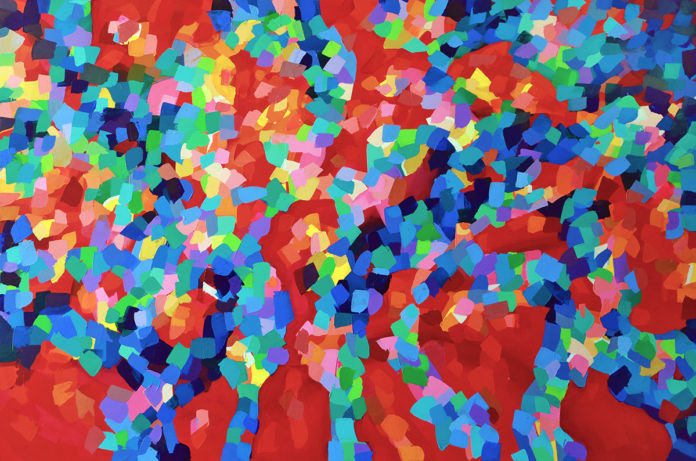“Punctuated Equilibrium” Curated by Peter Frank
Ricardo Mazal Santa Fe Studio, May 2022
by Lorien Suárez-Kanerva
Curated by Peter Frank, “Punctuated Equilibrium” showcased a selection of paintings from abstract expressionist artists Alison Hyman and Elaine Asarch.
Eric Minh Swenson documented Frank’s curatorial statement and Asarch and Hyman’s artworks from the show and at their studios.
Punctuated Equilibrium Video:
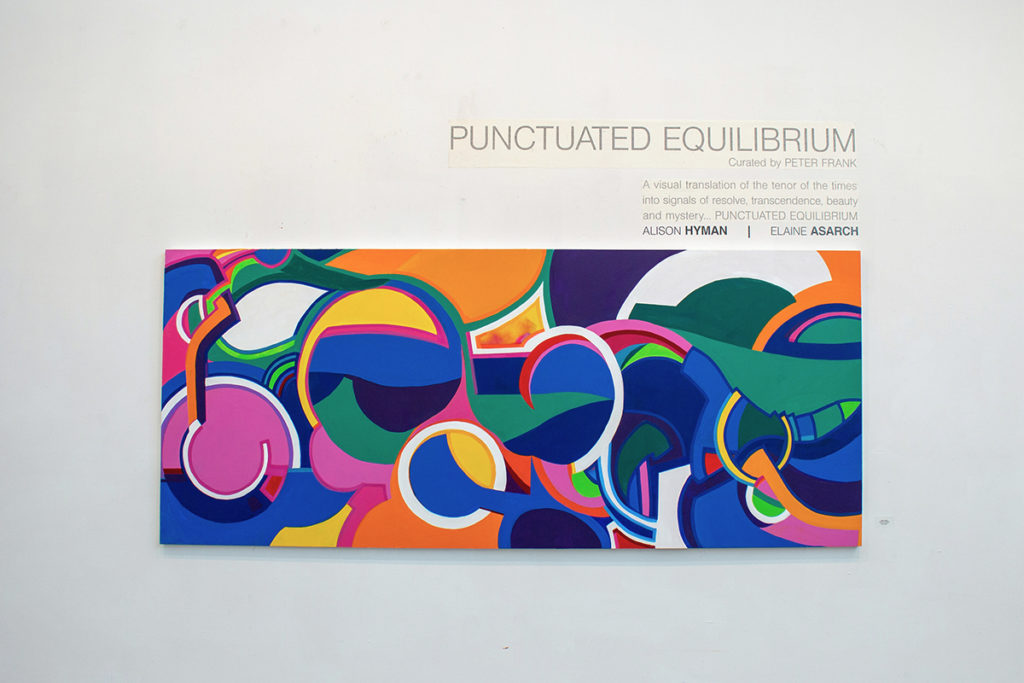
In our interview, Frank, Asarch, and Hyman delved into the context of the exhibition alongside the artists’ experiences, perceptions, and artwork.
LSK: How would you address the connection between the concept of “punctuated equilibrium” and the social polemics Hyman and Asarch consider through their work as abstract expressionist artists?
Peter Frank: The historical pattern of speciation was theorized as phyletic gradualism, smooth and continuous evolutionary change as suggested by fossil record. By contrast, Punctuated equilibrium, developed by Stephen Jay Gould and Niles Eldredge, posits long periods of evolutionary stasis disturbed infrequently but dramatically by brief periods of branching speciation – a stepwise, asymmetric process. Thus, the new theory reflects pauses and interruptions in earthly history caused by geological and otherwise seismic events that have changed the way the world works and the way we see it. Perhaps at this point, we do not need to be reminded of the parallel crises in nature and civilization we are witnessing (or even feeding), and we can be forgiven for suspecting that each crisis abets the other.
(Scientists and social scientists alike are coming to that very realization.)
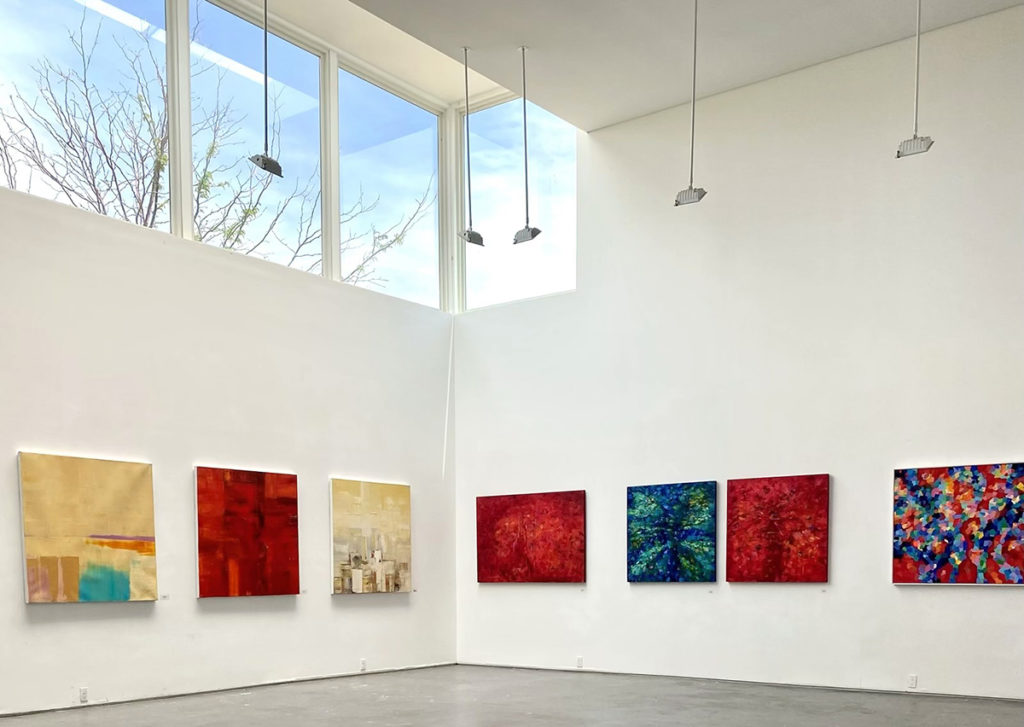
But art, modeling as it does the world(s) we inhabit and might inhabit, displays back to us our sense of crisis, at once generalizing that sense into spirit and clarifying that sense into calls for and pathways to action, both urgent and strategic. An artwork can contain all the representations and nuances of a flag, adding to and amplifying such meanings until they describe whole landscapes of actual and potential events and ideas. Asarch and Hyman do not expect their paintings themselves to effect change. But in creating worlds of color and atmospheres of inflection, in grasping the aesthetic lessons of abstract expressionism as applicable to human discourse beyond art itself (as the abstract expressionists themselves did), the two painters move beyond a platform for self-expression and towards one of universal discourse. The key to ending hunger and homelessness, war and famine, sickness and declimatization, is not buried in these canvases but our sensibilities. But these canvases exemplify patterns of realization that can bring the key to light.
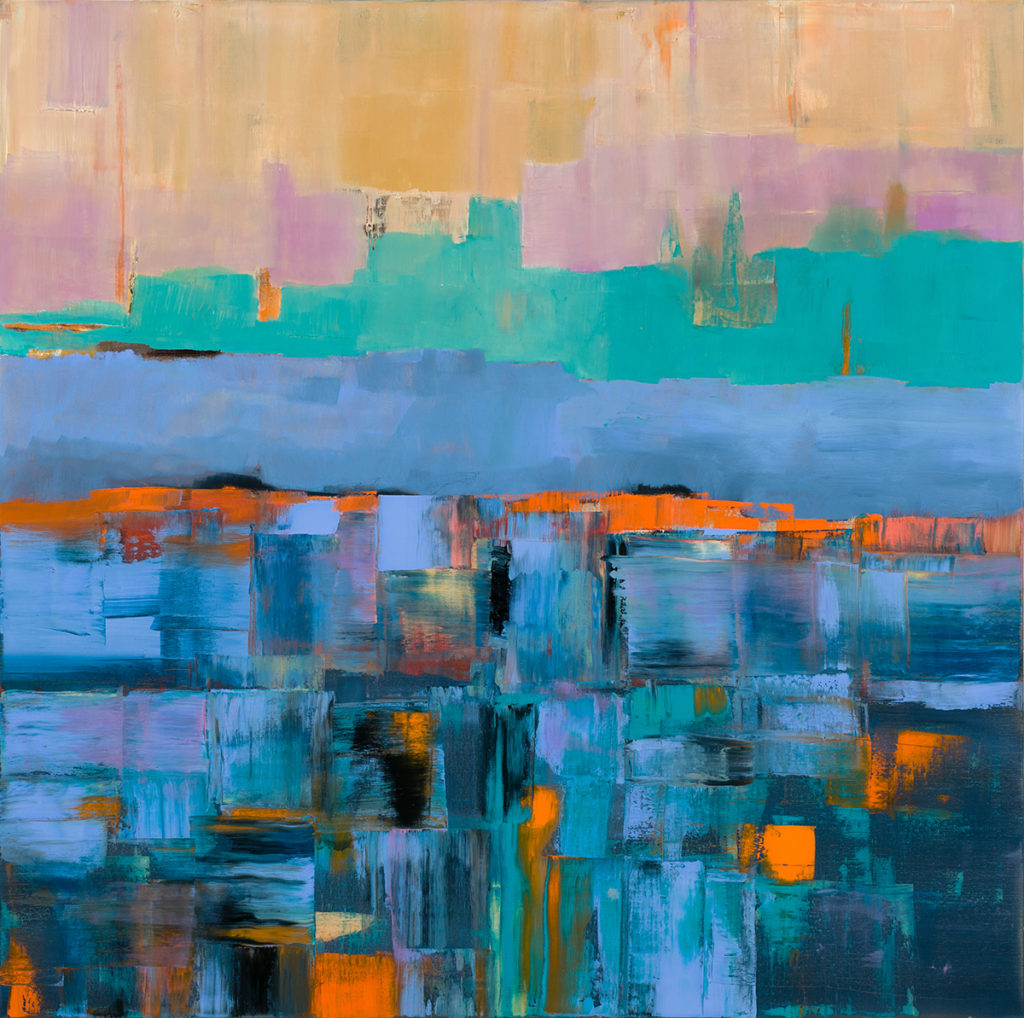
LSK: From your perspective as artists, how is Punctuated Equilibrium a concept reflected in your paintings?
Elaine Asarch: The concept for the Santa Fe show, “Punctuated Equilibrium,” came from my graduate studies in anthropology. The pandemic seemed to be one of these junctures where there have been major paradigm shifts in how we live and work. Mask wearing and working remotely have at the same time made us more hidden and yet more connected through technology and have created a culture of fear for the health of ourselves and our loved ones. Erosion of our environment due to climate patterns and social inequities such as health, education, and food insecurities due to the pandemic has made us look at our world and society very differently and, hopefully, more compassionately. My paintings reveal the emotional side of those tensions, fears, and hopes.
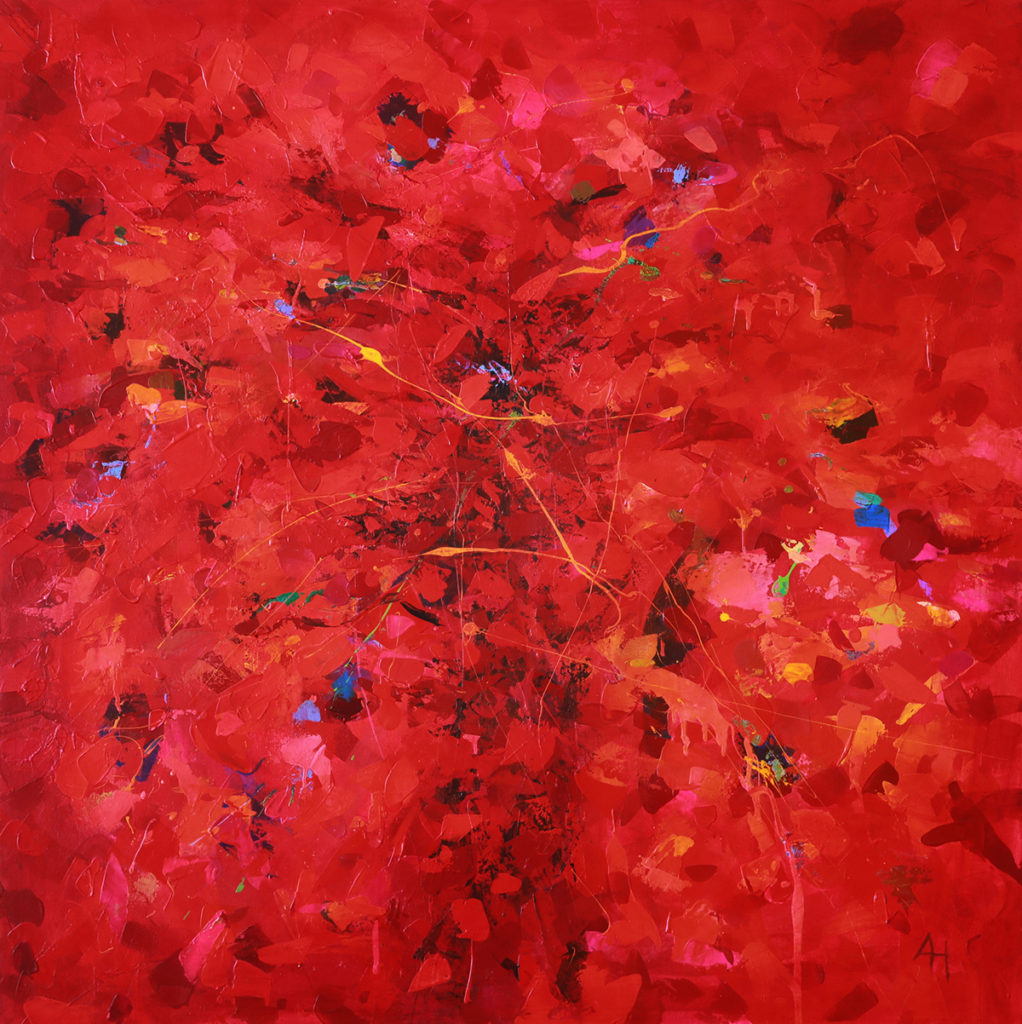
Alison Hyman: During the two years of the Covid lockdown, I painted “Seismic Love”. It began the same way as all my others, with a fast gestural covering of the canvas, pigments into gesso. It moved rapidly towards an entirely different language of abstraction – the colors were flat, the edges sharp. I felt compelled to paint this way, reverting to my student days of textile design and printmaking. Two years later, I recognized it for what it was only after its completion – my responses to the world as it had changed. The composition has swirls and curves leading nowhere to dead ends. The repeated apertures and closures eventually eroded our initial understanding of the crisis. As an artist, my paintings reflect these periods of conflict subconsciously but profoundly and personally.
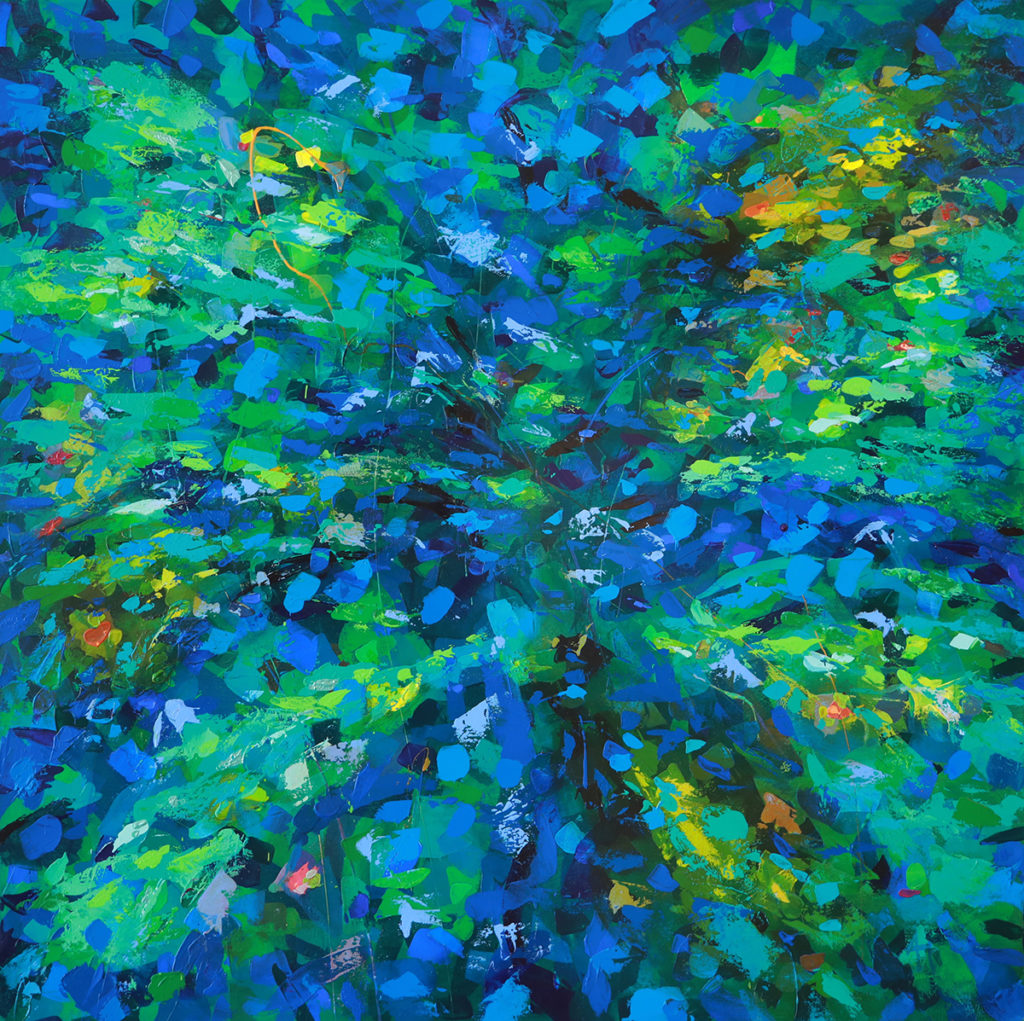
Frank’s conceptual analysis focused on the temporal and timeless abiding in Hyman and Asarch’s work.
“In times of uncertainty and upheaval, abstraction can present the same vitality and urgency as any other artistic language. Abstract art, however, balances urgency with a sense of timelessness. The work of Alison Hyman and Elaine Asarch seeks to manifest the momentous and the eternal equally.”
Both artists addressed these dichotomies in more detail, revealing distinct creative vantage points and sensibilities.

LSK: Can you describe your experience with balance amidst matters of urgency at the moment with a sense of timelessness?
Asarch: The moment is transitory, and if I don’t grab it in an instant, what is happening changes, and I may feel differently, depending on the experience. I try to capture a reaction to a particular moment.
Creating a balance between angst and hope creates a tension in my paintings which also brings life to them and hopefully will create a universal response about both the existential fears and joys of life amidst the inevitability of time and the erosion of the components affected by it.
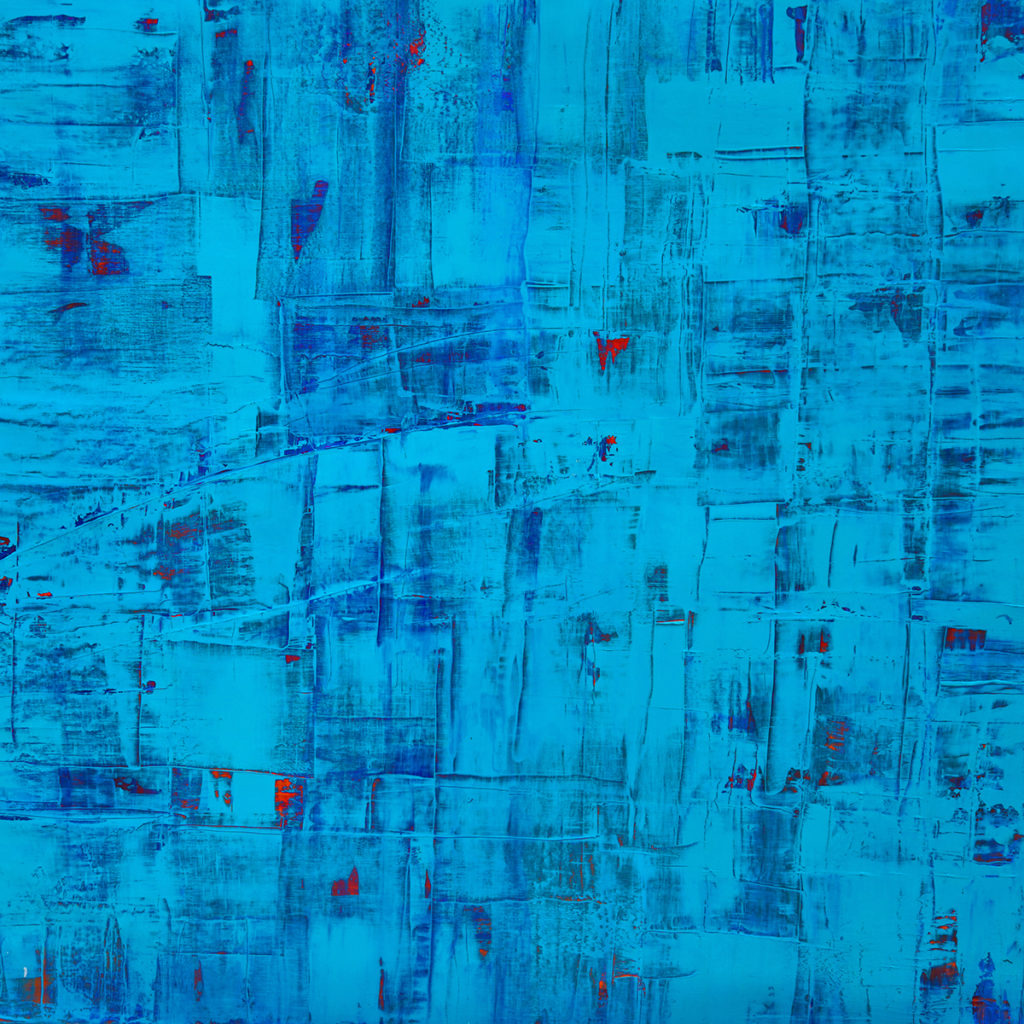
Hyman: The dichotomies in life are fascinating. In my mid-twenties, I taught Jimmy Boyle and Larry Winters in Glasgow’s 1973 Barlinnie Prison Special Unit experiment. It was a small group of extremely violent prisoners considered unmanageable. Jimmy Boyle ultimately became a sculptor and author. There was a contrast between the dark, oppressive maximum security prison and what these men produced. Although confined, their imaginations soared freely. From the 30 years of teaching art making and art history in colleges, my biggest joy is seeing pupils be creative and find their voice. Unbalance is at the outset. I strive for a balanced completion. I explore the things we can feel but cannot see imprecisely in an organic manner through obscured images and messages. Some are visible, while I conceal others to create the story I share. To visualize the things we can feel but cannot see in an intuitive and innately human way.

LSK: How does your work through the use of formal compositional elements such as color, gesture, light, and space address these questions?
Asarch: Training as an interior designer has helped me as an artist. I created spaces and shaped landscapes. Elements such as color, orientation, rhythm, balance, shape, and harmony influence and innately guide me, but my senses also affect me. Success on the canvas is more about the interpretation of emotion. I turned to abstraction as I was less inhibited by it than the representation of the elements. I was able to paint more from the heart and a deeper place. Gesture is an extension of my emotion rather than a response to pure design.
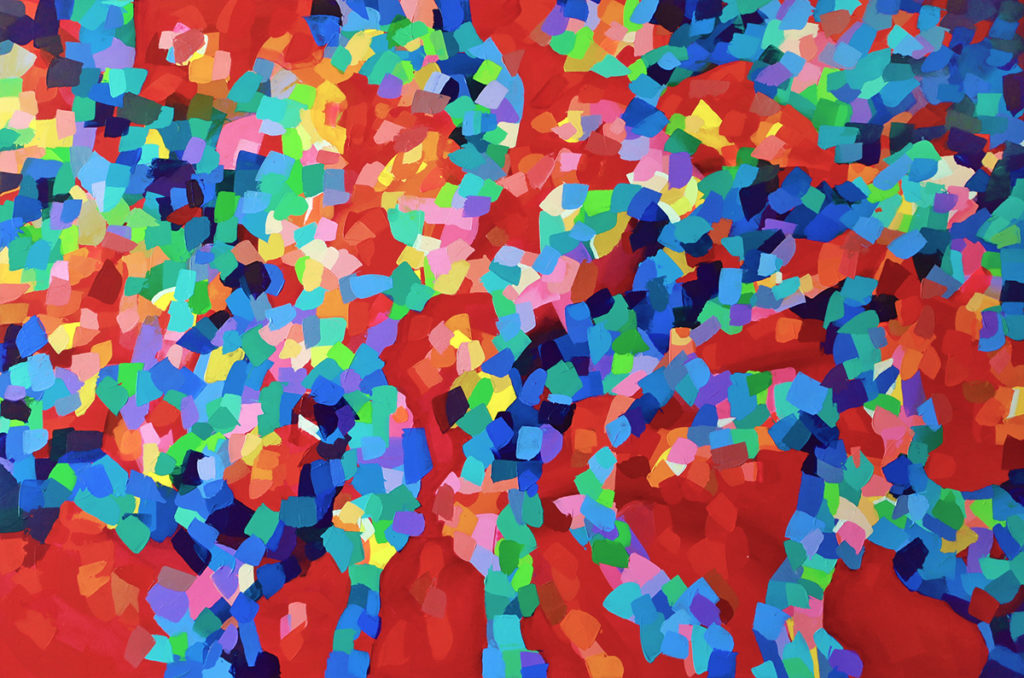
Hyman: We start a painting as one person, and in completing it, we are different. We have changed with the painting. We live only in the sliver of the present time, a continuous flow from the past to the future. It is non-spacial and without form. We try to control time by creating equal units to explain it. Still, we all experience it differently.
Over months, building layers of images, textures, and colors: obscuring, adding, removing, and peeling back, much like reverse archeology, creating the layers and strata for the viewer to uncover, I am making images and covering them with transparent, translucent and opaque colors, creating a sense of time and exploration, much like when you look at something old and worn that has had many uses, and you can see glimpses of other beautiful images underneath.
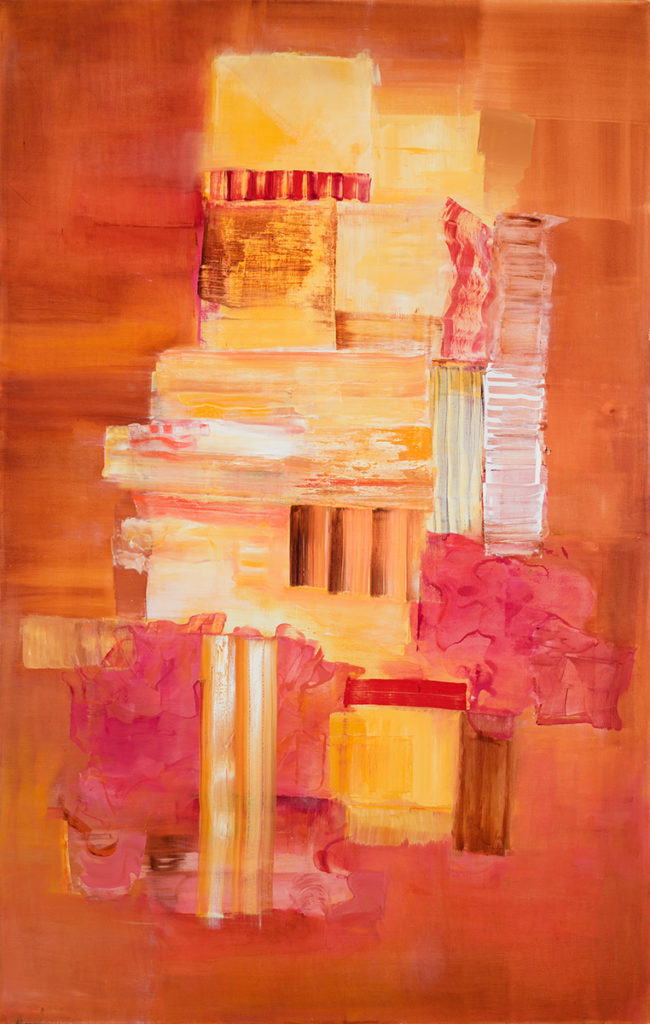
LSK: How does Punctuated Equilibrium touch upon your experiences as women artists?
Asarch: I admire Joan Mitchell, Elaine de Kooning, Helen Frankenthaler, Agnes Martin, and Rebecca Horn. I don’t know if they had families, but with their success, they had to make choices as women.
I hope it’s an optimum time to immerse myself in art now. It wasn’t when I was raising my children. I see my daughter and daughters-in-law, and they face similar decisions.
The image of perfection in motherhood is unattainable. Today there’s more acceptance of women pursuing their passions and career paths while raising families, but I am not sure it’s easier emotionally.
I hope that motherhood has brought greater depth to my paintings. Perhaps the urgency in knowing there is less time to establish my career as an artist endows a new dimension to my work.
Elaine Asarch Video:
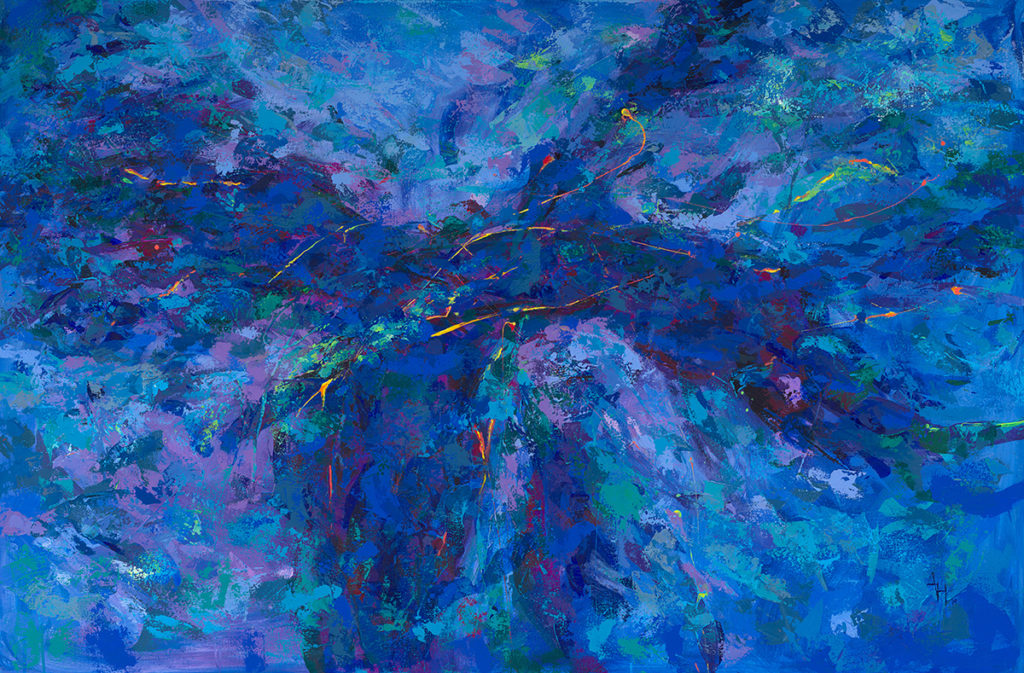
Hyman: As a wife, mother, and educator, it has been tough to have adequate creative energy left to pursue my artistic goals with enough time to truly immerse myself in the process.
While I’ve been painting and exhibiting my entire life, with motherhood in my twenties onwards, I had a chance only in the last decade to evolve as an artist fully.
Most women with families have had to quieten our voices to fit in with society and expectations. The process has enormous pleasure and fulfillment, but we use our finite energy to raise and nurture. Now in my sixties, my children are adults, and those past experiences have tempered my creativity and message, so it is stronger than ever.
Alison Hyman Video:
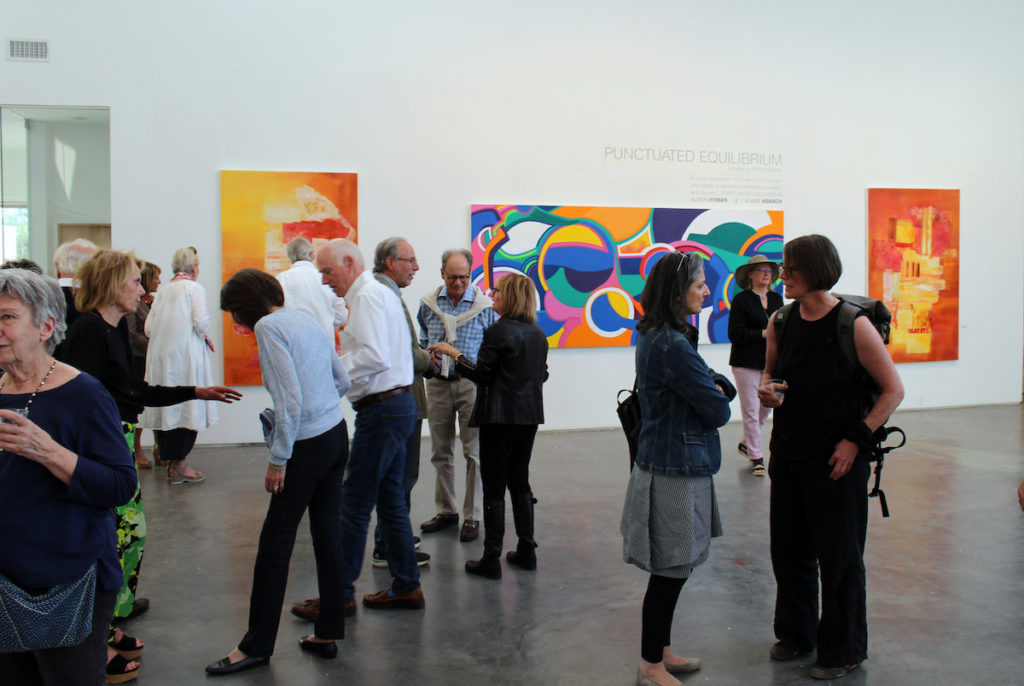
Frank, Asarch, and Hyman crafted an exhibition that spoke earnestly and incisively about today’s social crisis points. Following the isolation experienced through Covid-19, their timely collaborative effort engaged anew a community forum erstwhile sharing their creative journeys in the more intimate setting of Ricardo Mazal’s Santa Fe studio.


